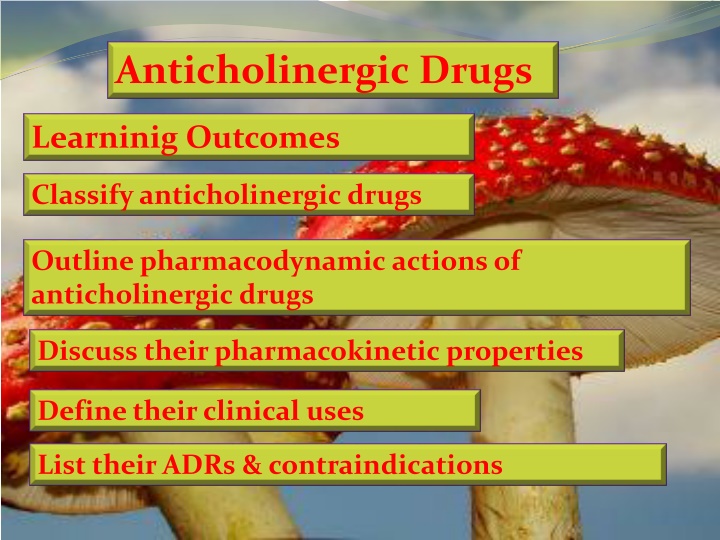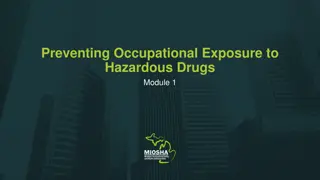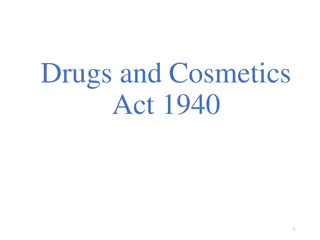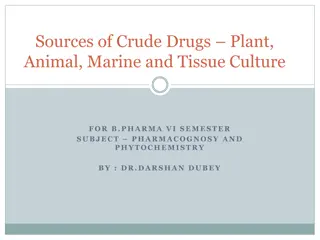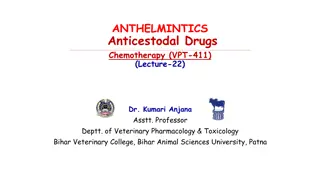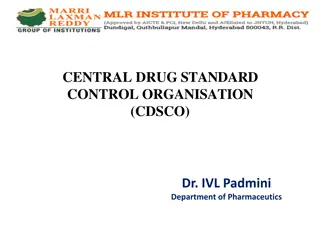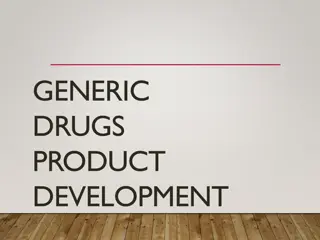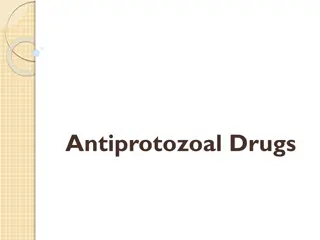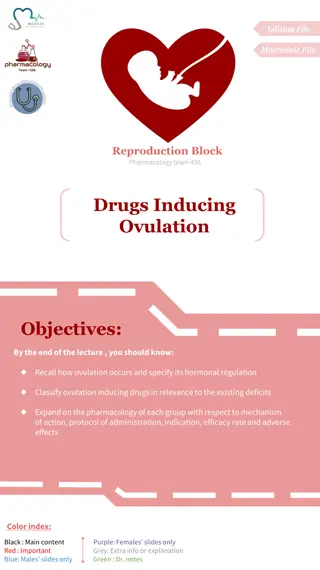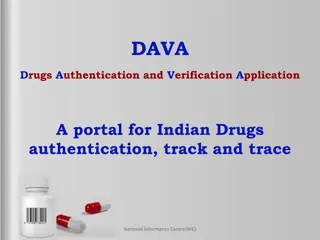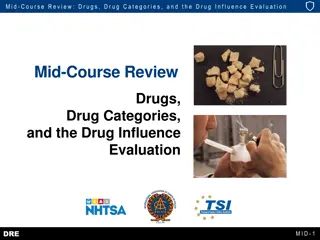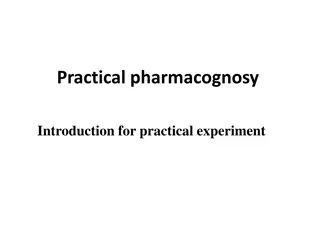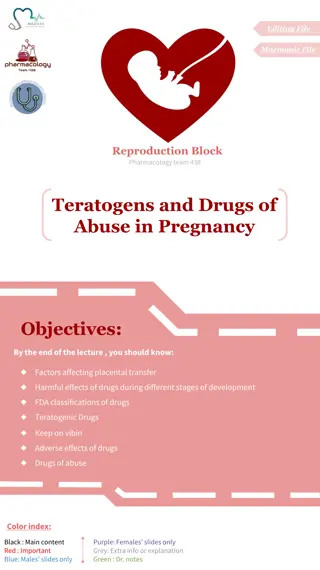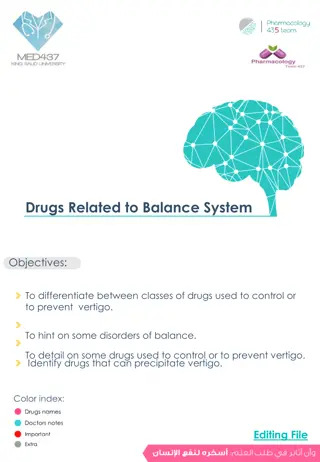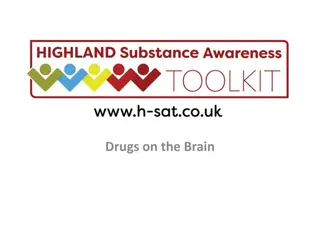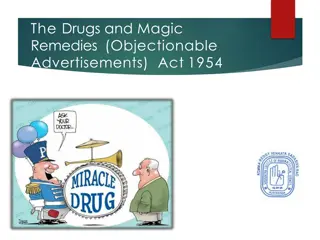Anticholinergic Drugs
Explore the pharmacodynamic and pharmacokinetic aspects of anticholinergic drugs, their clinical applications, and common adverse effects. Uncover the classification, outcomes, and contraindications related to these medications.
Download Presentation

Please find below an Image/Link to download the presentation.
The content on the website is provided AS IS for your information and personal use only. It may not be sold, licensed, or shared on other websites without obtaining consent from the author.If you encounter any issues during the download, it is possible that the publisher has removed the file from their server.
You are allowed to download the files provided on this website for personal or commercial use, subject to the condition that they are used lawfully. All files are the property of their respective owners.
The content on the website is provided AS IS for your information and personal use only. It may not be sold, licensed, or shared on other websites without obtaining consent from the author.
E N D
Presentation Transcript
Anticholinergic Drugs Learninig Outcomes Classify anticholinergic drugs Outline pharmacodynamic actions of anticholinergic drugs Discuss their pharmacokinetic properties Define their clinical uses List their ADRs & contraindications
Anticholinergic Drugs Antinicotinic Drugs Antimuscarinic Drugs According to source Natural Atropine Hyoscine According to structure Semisynthetic Tertiary amines Non-selective According to selectivity Homatropine Synthetic Quaternary ammonium Ipratropium, tropicamide Propantheline Selective Pirenzepine(M1)
Mechanism of action Competitively block muscarinic receptors Smooth muscle and heart are intermediate Gastric glands and gastric smooth muscles are the Salivary, bronchial, and sweat glands are most sensitive least.
Pharmacodynamic Actions CNS:- Atropine at clinical dose, initial stimulation followed by slower longer lasting sedative effect Hyoscine sedative effect Atropine stimulates many medullar centers vagal, respiratory, and vas motor. High doses of atropine cause cortical excitation, restlessness, disorientation, hallucinations, and delirium followed by respiratory depression and coma.
Pharmacodynamic Actions CVS:- Atropine causes tachycardia in isolated heart, due to blockade of M2-receptors on SA node Atropine shortens the refractory period of AV conduction In intact animals, initial bradycardia followed by tachycardia Atropine does not influence BP. It blocks the vasodepressor action of cholinergic agonists
Pharmacodynamic Actions Eye:- Relaxes pupillae constrictor mydriasis Relaxes cilliary muscle abolition of light reflex & [cycloplagia]. Accommodation (PSF).svg Increase intraocular pressure Lachrymal secretions
Pharmacodynamic Actions Respiratory system Atropine bronchodilation & of secretion
Pharmacodynamic Actions GIT:- Motility Secretion.
Pharmacodynamic Actions Genitourinary tract:- Atropine has relaxant action on the uriters & bladder wall Urinary retention can occur in older men with prostatic hyperplasia.
Pharmacodynamic Actions Summary of Effects Sweat glands:- Atropine decreases sweat secretion (M3-blockade) In children modest doses atropine fever
Pharmacokinetics Atropine and hyoscine are rapidly absorbed from the GIT When applied to the eyes they penetrate the cornea. Passage of atropine across BBB is restricted. 50% of atropine is metabolized in the liver and excreted unchanged in urine. Atropine has t1/2 of 3 4 h Hyoscine is more completely metabolized and has better BBB penetration.
Clinical Uses CNS:- i-Parkinsonism:- Benzhexol, benztropine ii-Motion sickness Hyoscine iii- Antemetic effect, blocking vomiting centres
Clinical Uses Ophthalmic disorders:- Ophthalmoscopic examination of retina Binocular indirect ophthalmoscopy
Clinical uses GIT:- Biliary & renal colic. UlcerPirenzepine Irritable bowel syndrome, colonic diverticular disease e.g. dicyclomine bladder disorders. Urinary incontinence (oxybutynin) Urinary urgency caused by minor inflammatory Traveler's diarrhoea with opioid [diphenoxylate]
Clinical Uses Respiratory disorders:- Pre- operative medication when anaesthetic secretion & laryngospasm pulmonary disease (COPD) Bronchial asthma & chronic obstructive Ipratropium(inhalation) Ipratropium Bromide Aerosols Hyoscine amnesia,
Clinical Uses Cardiovascular effects:- Pain of myocardial infarction] depression of SA, AV node Sinus bradycardia
Clinical Uses Cholinergic poisoning:- Cholinesterase inhibitors insecticides . Mushroom poisoning.
Clinical Uses Hyperhydrosis:-
Adverse Effects Mydriasis, blured vision Confusion, agitation, delirium Dry mouth , hot flushed skin, Constipation, urinary retention Tachycardia Body temperature
The Mnemonic Red as a beet Dry as a bone Blind as a bat Mad as a hen Full as a Flask Hot as Hell fire http://t3.gstatic.com/images?q=tbn:ANd9GcSvL15Qe_pV0OQc_WcblxZ46bCWFsvDjemdqGpVySoDlefoFhbJFZqOlA
Contra-indications Glaucoma Elderly people with prostatic hypertrophy Tachycardias secondary to thyrotoxicosis or cardiac insufficiency GI obstructive disease Paralytic ileus. Non selective M blockers ulcer
Quiz 1? A patient is brought into the emergency room. Upon examination you find the following: a high fever, rapid pulse, no bowel sounds and dilated pupils that do not respond to light. His lungs are clear. His face is flushed and his skin is dry. He is confused, disorientated and reports 'seeing monsters'. Based on these symptoms, you suspect he has been 'poisoned'. Which of the following, is the MOST obvious cause of poisoning? A. Neostigimine B. Physostigmine C. Atropine sulfate D. Acetylcholine
Quiz 2? You are working in the post anesthesia care unit of a hospital. You have just received a patient back from surgery and you are monitoring his status. Knowing that the patient has received atropine, which of the following statements/observations is UNEXPECTED? A. The patient is complaining of extreme thirst. B. The patient complains he is unable to clearly see the clock located just across from him. C. The patient's heart rate is elevated. D. The patient reports he has cramping and diarrhea.
